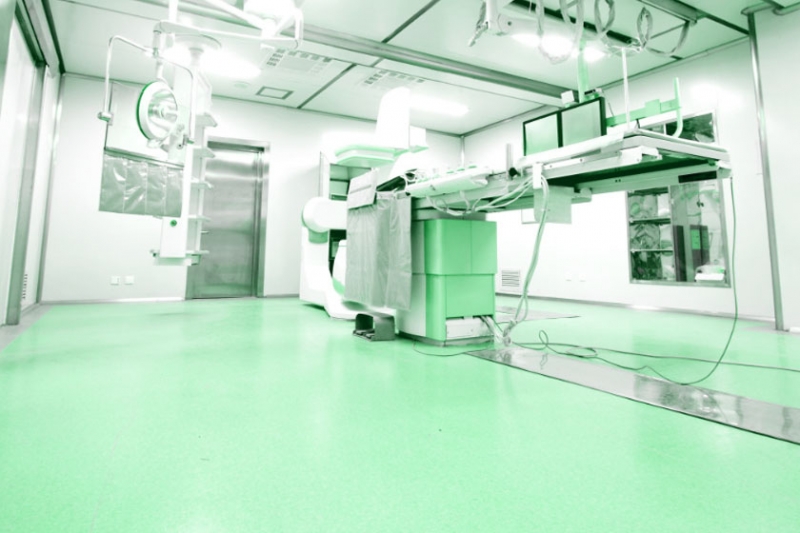Various ESD flooring options:
1) Conductive paint
2) ESD floor finish or conductive wax
3) Conductive/dissipative carpeting and carpet tile
4) Raised flooring with panels covered with options 7 or 8
5) Conductive/dissipative seamless flooring including epoxies, urethanes and quartz floors
6) Strategically located conductive mats and runners
7) Conductive/dissipative vinyl tile and vinyl sheet flooring
8) Conductive/dissipative rubber tile and rubber sheet flooring
Properly installed and adequately maintained, any of the eight options will provide some level of static protection in an electronics handling application. However, electrical performance is only one variable within the decision matrix. Options 1, 2, and 3 can be eliminated purely based on inherent contamination control liabilities such as most ESD paint flakes, delaminates and, because they are usually somewhat porous, ultimately generate dust. ESD waxes and floor finishes generate dust and fine particulates from abrasion caused by traffic and standard janitorial practices like buffing. Also, waxes require temporary shutdowns during periodic stripping and maintenance. Any carpet or textile-based flooring, option 3, will naturally capture and accumulate particles and eventually become a dirt generator.
Although option 4, the raised floor, is the defacto standard in most wafer fabrication areas, it is probably an expensive overkill for many cleanroom applications, other than offering access to wires and cables and air exchange; otherwise, there is little advantage to a cleanroom raised floor system.
Option 5, resinous flooring (epoxy or urethane) is rarely installed in occupied spaces due to odors, drying times and dust generated during floor preparation. After installation, epoxies and urethanes must cure for 24 to 72 hours which may make them undesirable flooring materials in any occupied space that must be turned over quickly. Epoxies are also difficult to repair in a cleanroom without closing off the area with plastic shrouds and air exhausts during grinding and reapplication process.
Floor mats and runners, option 6, are usually used as stop-gap solutions until a more permanent flooring material is identified. Floor runners offer limited protection because they are able to ground static charges on people or carts only if and when the latter are in direct physical contact with the runner or mat. This limitation means that the cleanroom will lack contiguous grounding. The resulting islands or zones of ESD protection force a continued reliance on expensive shielded packaging of static sensitive (ESDS) parts. Ensuring continuous ESD protection also requires redundant grounding through the combination of wrist straps and ground cords (which inhibits mobility). Wrist straps must be connected and disconnected every time parts are removed from packaging or transported through ungrounded areas.











